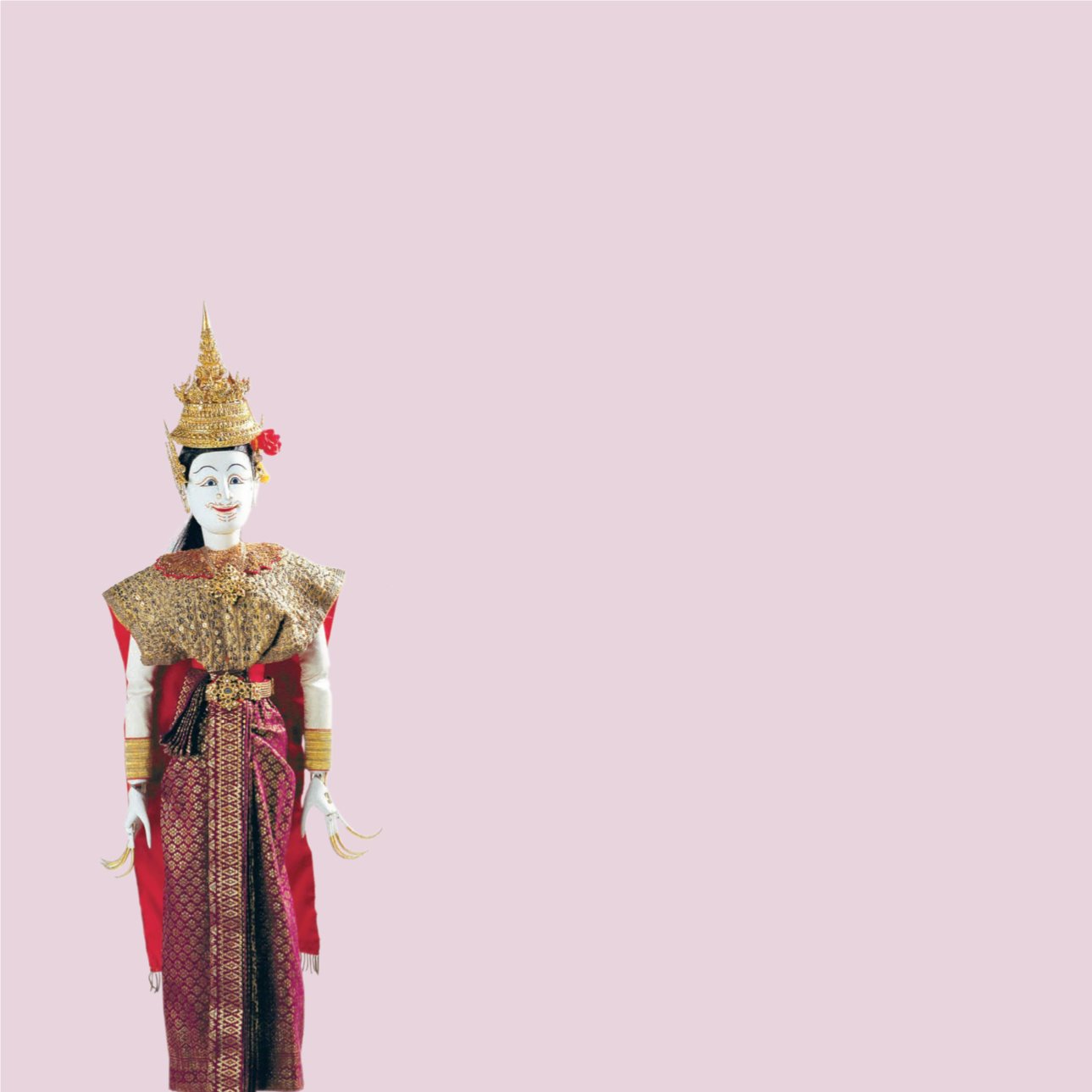

Performing Arts Spiritual Performances
|
95
Thai Puppet
The Science and Art of Performance
Thai puppet theatre is the art of pulling and plunging. It requires expertise, skills and
multiple knowledge of the puppeteers to drive the puppet’s movement like the gesture of humans
as much as possible, at the same time also in harmony with the music rhythm and roles in the
story. Thai puppets are divided into 4 sub-types: Hun Luang, Hun Wang Na, Hun Krabok, and
Hun Lakhon Lek.
Hun Luang (The Great Royal Puppet)
Hun Luang is the royal performance emerged since the middle Ayutthaya period of King
Narai. It is evident in royal orders, Thai books and various literatures. Hun Luang’s prominent
feature is its large size about one meter tall, made of wood. Hauled at abdomen, the puppet’s
body is tied with fingers by stacked rattans and strings for controlling its movement, while legs
and feet are fixed together. The puppeteer holds the wooden handle at the bottom part of the
puppet and moves the strings to perform different actions. The puppet’s costume and ornaments
is similar to those of Khon and Lakhon.
“
The personality and appearance
of the puppet will be adjusted in
accordance with the characteristics,
popularity and culture of the people
in individual country, as well as the
Thai puppet that conveys the dance,
costume and the continuity from the
Thai performing arts.
”
• Mural paintings of “Ramayana” on the
cloister’s exterior walls of Wat Phra Si Rattana
Satsadaram (Temple of the Emerald Buddha)


















